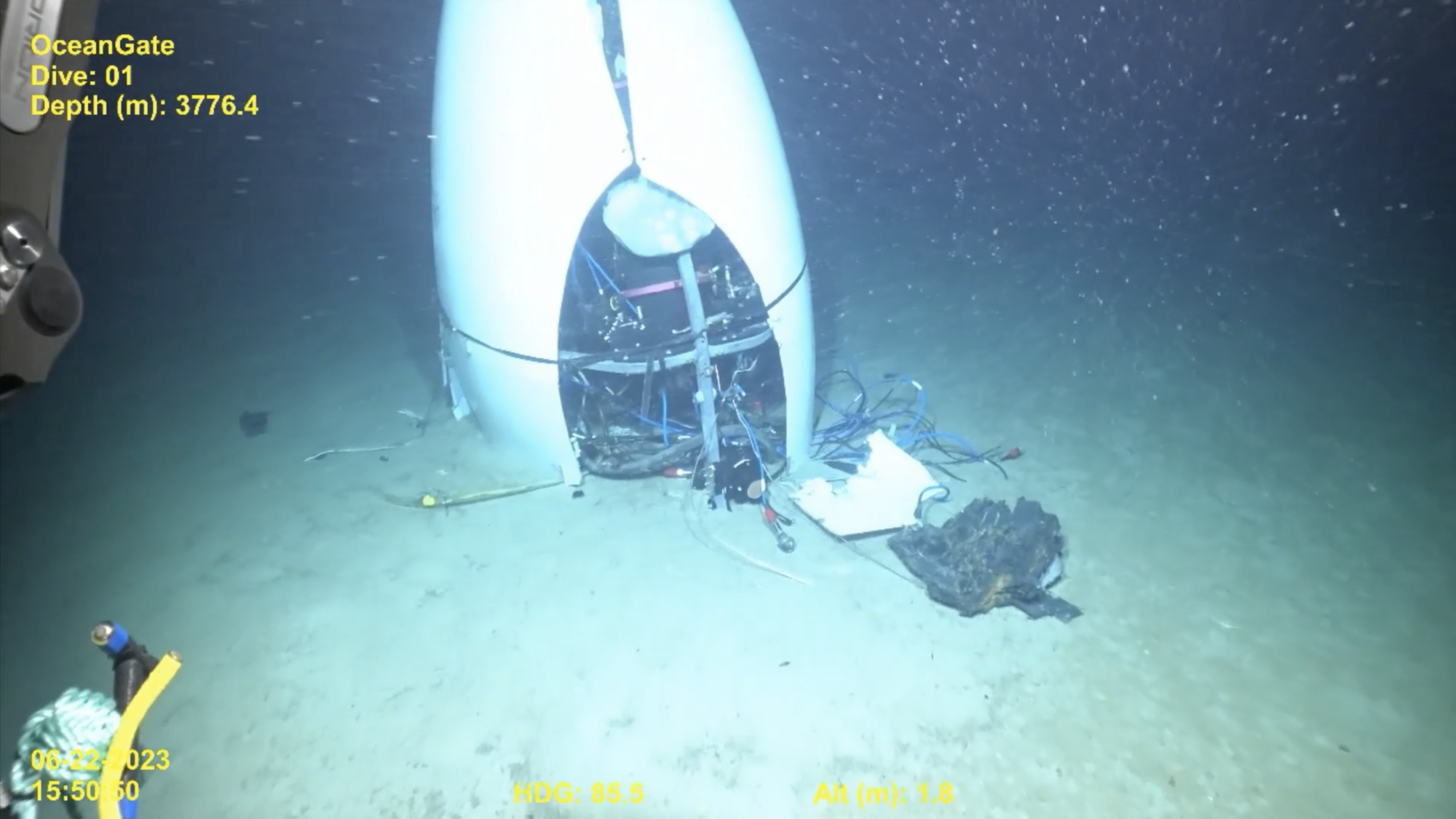

The US Coast Guard released a map of the expansive debris field generated shortly after last year’s fatal OceanGate Titan submersible implosion. Although initially compiled during recovery efforts that took place June 23-29, 2023, representatives made the information public on September 22 as part of the ongoing Marine Board of Investigation (MBI) hearings into the tragedy that killed five passengers during their descent to visit the Titanic’s historic wreckage. In an email to Popular Science, a USCG spokesperson confirmed pieces of the privately owned submersible deposited across an area of approximately 30,000-square-meters (322,917-square-feet), roughly 1,600 ft away from the Titanic’s bow.

Co-founded by CEO Stockton Rush in 2007, OceanGate began providing private tourist excursions to the famous ocean cruise liner’s wreckage aboard its 22-foot-long Titan submersible in 2021. For years, however, critics and international regulatory organizations repeatedly voiced concerns about the company’s approach to vehicle engineering and safety measures.
On June 18, 2023, OceanGate’s surface vessel lost contact with Titan about 105 minutes into its fifth overall mission’s nearly 2.5 mile descent to the Titanic. The subsequent international search effort scoured over 10,000 square miles of the Atlantic Ocean over the next four days. On June 22, officials confirmed the discovery of submersible remains indicating a near-instantaneous “catastrophic implosion,” which likely occurred shortly after OceanGate lost contact. All five passengers, including Stockton Rush, died in the accident.

The USCG proceeded to organize multiple salvage missions in the ensuing months to “carefully recover” as much of the Titan wreckage and human remains as possible. On October 10, 2023, representatives announced the project’s completion, as well as previewed an impending MBI investigation “ahead of a public hearing regarding this tragedy.” Those hearings began on September 16, and are currently scheduled to conclude on September 27 after depositions from 25 witnesses, including former OceanGate engineers, Coast Guard officials, and submersible construction contractors.
At the time of the accident, OceanGate claimed Titan was one of only three submersibles in the world capable of withstanding the pressures experienced at the bottom of the North Atlantic Ocean. The company previously alleged its submersible was classed for a depth range of 4,000 meters (13,123 ft). The wreck is located 12,400 ft below the ocean surface in what’s known as the dark bathypelagic, or midnight, zone. Pressures there reach around 375 atmospheres, which exerts the equivalent of 5,500 pounds per square inch (psi) of force on an object—roughly 1,500 psi greater than is estimated for a great white shark bite.
[Related: What the US Coast Guard found on their last OceanGate Titan salvage mission.]
Such inhospitable environments mean that even the slightest malformation or flaw in a vessel’s construction would trigger a near-instantaneous implosion in less than 20 milliseconds, faster than a human brain could register the event. The USCG’s debris field map appears consistent with initial estimations that Titan underwent delamination, causing the carbon-fiber hull split horizontally as water rushed into fill the space, crushing the vessel, and subsequently ejecting the debris while the larger end caps fell to the ocean floor.
While deep sea currents may have influenced the spread of debris, a spokesperson told Popular Science the USCG “can confirm the debris was discovered in close proximity to the last recorded position of the submersible Titan,” suggesting the implosion was the primary force behind such a wide wreckage field. Despite recovering hundreds of fragments from the site, a few sizable portions of Titan—such as those seen in video footage also released recently during the MBI hearings—were too heavy to bring to the surface.
“The majority of the debris has been salvaged,” the USCG spokesperson explained, adding that: “The carbon fiber hull fragments that remain on the seafloor are not expected to move from their original locations.”